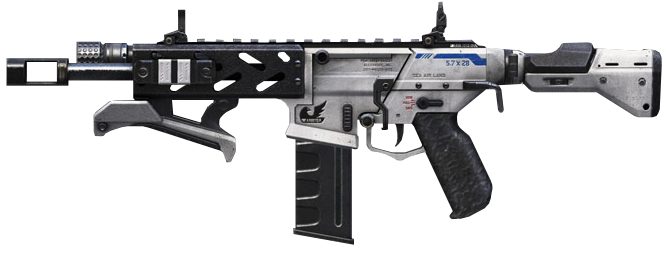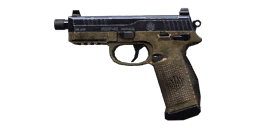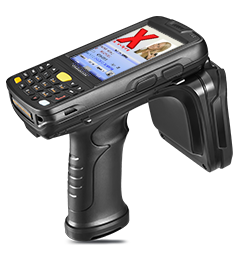2B aka The lewd keeper
New member
YOUR CHARACTER CANNOT ACCESS THIS IC, UNLESS HE/SHE IS GIVEN THIS BY A CSEC MEMBER OR IS PART OF CSEC

PEACEKEEPING EMPLOYEE MANUAL TYPE III
EDITION IV - NOVEMBER 2084
DECLASSIFIED EDITION - DO NOT COPY
PRINTED AND PUBLISHED BY:
CASCADIAN SECURITY ENFORCEMENT COMPANY
PUBLIC RELATIONS DIVISION MANAGEMENT OFFICE
25 STAND STREET
EMERALD-4
CHAPTER 0: TABLE OF CONTENTS
Chapter I: Organisation and Structure..........................................II
Chapter II: Radio Communication Guide.....................................III
Chapter III: Equipment.................................................................IV
Chapter IV: Standart Procedures..................................................V
CHAPTER I: ORGANISTATION AND STRUCTURE
The Divisions:
-ADMN: Handling mostly administrative tasks. This includes, but is not limited to,
authorizing deportation penalties
(death penalties incase of subjects deemed too dangerous to be deported
to the outside america), division
changes (PTRL to RSPNS or ADMN and similiar. If an employee
wishes to change to Blacklight have to
additionally be authorized by a Blacklight Senior Member ((Blackdenim))),
sting operations, license issuing
and -revoking, bounty administration, warrant arrests & searches and
CSEC-Drone deployments.
ADMN-Members do not patrol, and if they go outside to take care of
CSEC-Business, they must take a PDW
or Handgun with them. It is recommended that ADMN-Members
always take an escort with them.
ADMN-Members may never enter High Risk Areas. ADMN
members are also tasked with recruitment interviews and training courses.
-PTRL: Tasked with general patrolling in the street. Usually permitted to patrol
on their own, but may only patrol in
pairs of two or more in areas that were designated as ‘High Risk Area’.
PTRL-Members will be armed with the
HS-CSEC SIAR .PTRL Members may never open fire unless fired upon or
if a civilian’s life is in danger.
Usually the first rank to start out as after passing the stage of ADMN-Recruit.
-PTRL-TAC: Visually the same as PTRL, but having received a different sort of training.
These units are trained with a focus
on tactical efficiency, and function more as a tactical response team -
employing SWAT- and sometimes
military-like tactics. These units are faster to fire upon suspects, as they’re called in for
dangerous situations. When not deployed as RSPNS, they can take up the tasks
of PTRL-Members. RSPNS members are usually armed with the CSEC-SISFR, which
provides a tactically higher value due to it’s more ergonomic design,
higher precision and selective fire capacity - at the cost of a higher weight than the SIAR.
RSPNS: A Max-Tac Unit comprised of Fully Augged, heavaly armed and armored personell, they are called in,
incases of Cyber-Psychos or anything to much for PTRL-TAC to handle. Usally its a hunt and kill order
unless told or requested otherwise.
A table with the rank structure can be found here.
CHAPTER II: AREA OF OPERATIONS
ANY DEPLOYMENTS AND PATROLS OUTSIDE OF THIS AREA REQUIRES SPECIAL PERMISSION OF ADMN-III OR ABOVE
CHAPTER III: EQUIPMENT
HS-CSEC-STANDART ISSUE ASSAULT RIFLE (SIAR)

The 5.7x28mm-chambered SIAR is the backbone of every CSEC-Peacekeeping operation. Reliable, light enough for prolonged patrols, and deadly in any good shooter's hands, this rifle will be your companion during your time in PTRL. The 5.7x28mm cartridge, originally designed by FN Herstal, is able to penetrate most light and kevlar-based body armors, making this the ideal weapon to hold down criminal gang violence. It's 30-round magazines, a long-standing standart for assault rifles, come with a straight, fast-to-reach and easy-to-fit design, and the weapon's high rate of fire of 750RPM allow it to be used in a versatile manner.
HS-CSEC-STANDART ISSUE SELECTIVE FIRE RIFLE (SISFR)

The 5.56x45mm chambered SISFR is a specialized rifle designed for the needs of our RSPNS-Members risky operations. It comes as a sturdy, heavy package with an effective caliber, near-indestructible body, very high reliability and a rate of fire of 700 RPM. Due to it's ability to be switched from fully automatic to semi automatic, it proved useful in various CQC- and hostage-situations in the past, due to which it is a long and well-regarded part of our rifle family.
JA-TAC

"Pistols do not win wars, but they save the lives of the men who do." The JA-TAC is the CSEC-Sidearm of choice when it comes to a backup firearm or personal defence issued to our employees on a regular basis. This one, chambered in .45, is also quite reliable - but also light, concealable and easy to use. However, our employees are free to purchase a firearm of their choice on the civil market to use on duty instead, when it comes to pistols.. (This does not apply to rifles.)
Handheld Arch Scanner Zeb199X

The Zeb199X is a handheld, pistol-gripped device designed and intended to scan a variety of objects, but first and foremost, arches. Using it requires the user to point it's scanning unit in the general direction of any arch or other NFC-Capable device within one meter, or hold it over scannable codes, e.g. numeric or barcodes. The device will read the code or identify the device, gather all required information from the SPRAWL-Servers, and display those to the user - ranging from identities, pictures, validation times, wether a person is wanted or not and even their age. It can also be used as a emergency radio.
UNIFORMS
PAC PATHS:
Formal Female: models/lt_c/sci_fi/humans/female_00.mdl
Formal Male: odels/lt_c/sci_fi/humans/male_00.mdl
ADMN
DUTY UNIFORM:
Grey/Red formal dress.
FORMAL UNIFORM:
Grey/Red formal dress with corresponding beret.
PTRL
DUTY UNIFORM
White/Blue Uniform.
Black MOLLE-Rig with Tier III ballistic plating.
(Tier IV for ranks PT-TL and above)
Tier III helmet with black balaclava, shades with HUD-Elements.
FORMAL UNIFORM
Blue/Black formal dress with corresponding beret.
RSPNS
DUTY UNIFORM
White/Blue Uniform.
Black MOLLE-Rig with ballistic plating Tier III.
(Tier IV for ranks RS-III and above)
Tier III helmet with black balaclava, shades with HUD-Elements.
FORMAL UNIFORM
White/Golden formal dress with corresponding beret.
CHAPTER IV: STANDARD PROCEDURES
IV.I: RADIO PROCEDURE
When utilizing the radio communication device, Units must adhere to the radio protocol to all times. This means that messages must be composed like this:
Contact Request: "[Broadcaster] to [Receipient]"
Contact Request Response: "[Receipient] to [Broadcaster], send message."
Message: "[Broadcaster], [Receipient], [Message], [Over]"
This means that, if you wish to message another officer, you must ensure that they are listening and copying the message. Once they respond to you, you send the actual response. In practise, the result is this:
You: "Conrad to Hzu."
Receipient: "Hzu, Conrad, send message."
You: "Conrad, Hzu, requesting status update on suspect Max Mustermann. Over"
"Over" indicates that your message is over and you are waiting for a response. If you do not expect a response, you may use "Out." Never say "Over & Out" as this may damage C-SEC's reputation as a professional peacekeeping force.
If you are trying to contact an individual of a certain group and not a certain individual itself, you may use "[Broadcaster] to [Group]", e.g. "Conrad to available ADMN."
CHAPTER V: Forms
Report Form:
<font size="4">Name:
Division:
Date:
Time (GMT):
Witnesses:
Report:</font>
CHAPTER IV:
Use of force:
All CSEC Forces must utilize force continuum standards on duty. This standard dictates how much force should be used on a non compliant subject.
While incredibly simple, there is much detail that could be put into this subject. To keep things general and short, you only escalate in force as required. If someone is not compliant however unarmed and simply cussing you out, don't shoot them - simply resort to control tactics and mechanics of arrest. If someone presents a lethal and genuine threat - you may train your weapon on them and utilize non lethal measures to subdue including pepper spray, taser, open hand techniques. If someone is threatening lives/ meaning to inflict serious harm and has the means to do so - and you believe them to be about to do so, lethal force is fully acceptable.
You'll find most of this comes to common sense. De-escalating with verbal and co-operative controls should always be your go-to for dealing with situations.

PEACEKEEPING EMPLOYEE MANUAL TYPE III
EDITION IV - NOVEMBER 2084
DECLASSIFIED EDITION - DO NOT COPY
PRINTED AND PUBLISHED BY:
CASCADIAN SECURITY ENFORCEMENT COMPANY
PUBLIC RELATIONS DIVISION MANAGEMENT OFFICE
25 STAND STREET
EMERALD-4
CHAPTER 0: TABLE OF CONTENTS
Chapter I: Organisation and Structure..........................................II
Chapter II: Radio Communication Guide.....................................III
Chapter III: Equipment.................................................................IV
Chapter IV: Standart Procedures..................................................V
CHAPTER I: ORGANISTATION AND STRUCTURE
The Divisions:
-ADMN: Handling mostly administrative tasks. This includes, but is not limited to,
authorizing deportation penalties
(death penalties incase of subjects deemed too dangerous to be deported
to the outside america), division
changes (PTRL to RSPNS or ADMN and similiar. If an employee
wishes to change to Blacklight have to
additionally be authorized by a Blacklight Senior Member ((Blackdenim))),
sting operations, license issuing
and -revoking, bounty administration, warrant arrests & searches and
CSEC-Drone deployments.
ADMN-Members do not patrol, and if they go outside to take care of
CSEC-Business, they must take a PDW
or Handgun with them. It is recommended that ADMN-Members
always take an escort with them.
ADMN-Members may never enter High Risk Areas. ADMN
members are also tasked with recruitment interviews and training courses.
-PTRL: Tasked with general patrolling in the street. Usually permitted to patrol
on their own, but may only patrol in
pairs of two or more in areas that were designated as ‘High Risk Area’.
PTRL-Members will be armed with the
HS-CSEC SIAR .PTRL Members may never open fire unless fired upon or
if a civilian’s life is in danger.
Usually the first rank to start out as after passing the stage of ADMN-Recruit.
-PTRL-TAC: Visually the same as PTRL, but having received a different sort of training.
These units are trained with a focus
on tactical efficiency, and function more as a tactical response team -
employing SWAT- and sometimes
military-like tactics. These units are faster to fire upon suspects, as they’re called in for
dangerous situations. When not deployed as RSPNS, they can take up the tasks
of PTRL-Members. RSPNS members are usually armed with the CSEC-SISFR, which
provides a tactically higher value due to it’s more ergonomic design,
higher precision and selective fire capacity - at the cost of a higher weight than the SIAR.
RSPNS: A Max-Tac Unit comprised of Fully Augged, heavaly armed and armored personell, they are called in,
incases of Cyber-Psychos or anything to much for PTRL-TAC to handle. Usally its a hunt and kill order
unless told or requested otherwise.
A table with the rank structure can be found here.
CHAPTER II: AREA OF OPERATIONS
ANY DEPLOYMENTS AND PATROLS OUTSIDE OF THIS AREA REQUIRES SPECIAL PERMISSION OF ADMN-III OR ABOVE
CHAPTER III: EQUIPMENT
HS-CSEC-STANDART ISSUE ASSAULT RIFLE (SIAR)
The 5.7x28mm-chambered SIAR is the backbone of every CSEC-Peacekeeping operation. Reliable, light enough for prolonged patrols, and deadly in any good shooter's hands, this rifle will be your companion during your time in PTRL. The 5.7x28mm cartridge, originally designed by FN Herstal, is able to penetrate most light and kevlar-based body armors, making this the ideal weapon to hold down criminal gang violence. It's 30-round magazines, a long-standing standart for assault rifles, come with a straight, fast-to-reach and easy-to-fit design, and the weapon's high rate of fire of 750RPM allow it to be used in a versatile manner.
HS-CSEC-STANDART ISSUE SELECTIVE FIRE RIFLE (SISFR)

The 5.56x45mm chambered SISFR is a specialized rifle designed for the needs of our RSPNS-Members risky operations. It comes as a sturdy, heavy package with an effective caliber, near-indestructible body, very high reliability and a rate of fire of 700 RPM. Due to it's ability to be switched from fully automatic to semi automatic, it proved useful in various CQC- and hostage-situations in the past, due to which it is a long and well-regarded part of our rifle family.
JA-TAC
"Pistols do not win wars, but they save the lives of the men who do." The JA-TAC is the CSEC-Sidearm of choice when it comes to a backup firearm or personal defence issued to our employees on a regular basis. This one, chambered in .45, is also quite reliable - but also light, concealable and easy to use. However, our employees are free to purchase a firearm of their choice on the civil market to use on duty instead, when it comes to pistols.. (This does not apply to rifles.)
Handheld Arch Scanner Zeb199X

The Zeb199X is a handheld, pistol-gripped device designed and intended to scan a variety of objects, but first and foremost, arches. Using it requires the user to point it's scanning unit in the general direction of any arch or other NFC-Capable device within one meter, or hold it over scannable codes, e.g. numeric or barcodes. The device will read the code or identify the device, gather all required information from the SPRAWL-Servers, and display those to the user - ranging from identities, pictures, validation times, wether a person is wanted or not and even their age. It can also be used as a emergency radio.
UNIFORMS
PAC PATHS:
Formal Female: models/lt_c/sci_fi/humans/female_00.mdl
Formal Male: odels/lt_c/sci_fi/humans/male_00.mdl
ADMN
DUTY UNIFORM:
Grey/Red formal dress.
FORMAL UNIFORM:
Grey/Red formal dress with corresponding beret.
PTRL
DUTY UNIFORM
White/Blue Uniform.
Black MOLLE-Rig with Tier III ballistic plating.
(Tier IV for ranks PT-TL and above)
Tier III helmet with black balaclava, shades with HUD-Elements.
FORMAL UNIFORM
Blue/Black formal dress with corresponding beret.
RSPNS
DUTY UNIFORM
White/Blue Uniform.
Black MOLLE-Rig with ballistic plating Tier III.
(Tier IV for ranks RS-III and above)
Tier III helmet with black balaclava, shades with HUD-Elements.
FORMAL UNIFORM
White/Golden formal dress with corresponding beret.
CHAPTER IV: STANDARD PROCEDURES
IV.I: RADIO PROCEDURE
When utilizing the radio communication device, Units must adhere to the radio protocol to all times. This means that messages must be composed like this:
Contact Request: "[Broadcaster] to [Receipient]"
Contact Request Response: "[Receipient] to [Broadcaster], send message."
Message: "[Broadcaster], [Receipient], [Message], [Over]"
This means that, if you wish to message another officer, you must ensure that they are listening and copying the message. Once they respond to you, you send the actual response. In practise, the result is this:
You: "Conrad to Hzu."
Receipient: "Hzu, Conrad, send message."
You: "Conrad, Hzu, requesting status update on suspect Max Mustermann. Over"
"Over" indicates that your message is over and you are waiting for a response. If you do not expect a response, you may use "Out." Never say "Over & Out" as this may damage C-SEC's reputation as a professional peacekeeping force.
If you are trying to contact an individual of a certain group and not a certain individual itself, you may use "[Broadcaster] to [Group]", e.g. "Conrad to available ADMN."
CHAPTER V: Forms
Report Form:
<font size="4">Name:
Division:
Date:
Time (GMT):
Witnesses:
Report:</font>
CHAPTER IV:
Use of force:
All CSEC Forces must utilize force continuum standards on duty. This standard dictates how much force should be used on a non compliant subject.
While incredibly simple, there is much detail that could be put into this subject. To keep things general and short, you only escalate in force as required. If someone is not compliant however unarmed and simply cussing you out, don't shoot them - simply resort to control tactics and mechanics of arrest. If someone presents a lethal and genuine threat - you may train your weapon on them and utilize non lethal measures to subdue including pepper spray, taser, open hand techniques. If someone is threatening lives/ meaning to inflict serious harm and has the means to do so - and you believe them to be about to do so, lethal force is fully acceptable.
You'll find most of this comes to common sense. De-escalating with verbal and co-operative controls should always be your go-to for dealing with situations.
